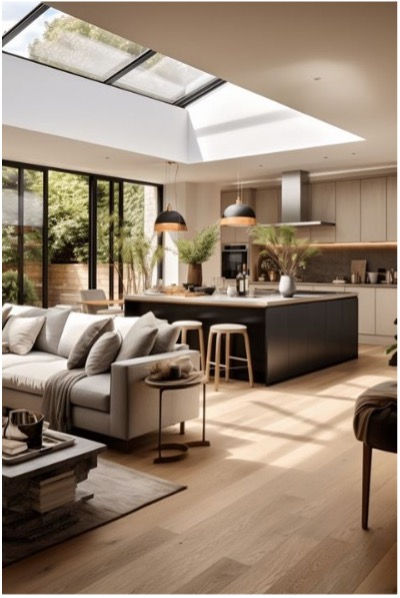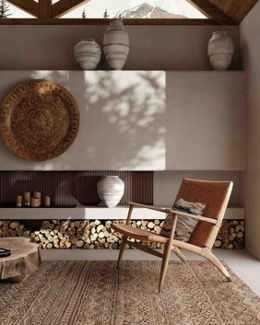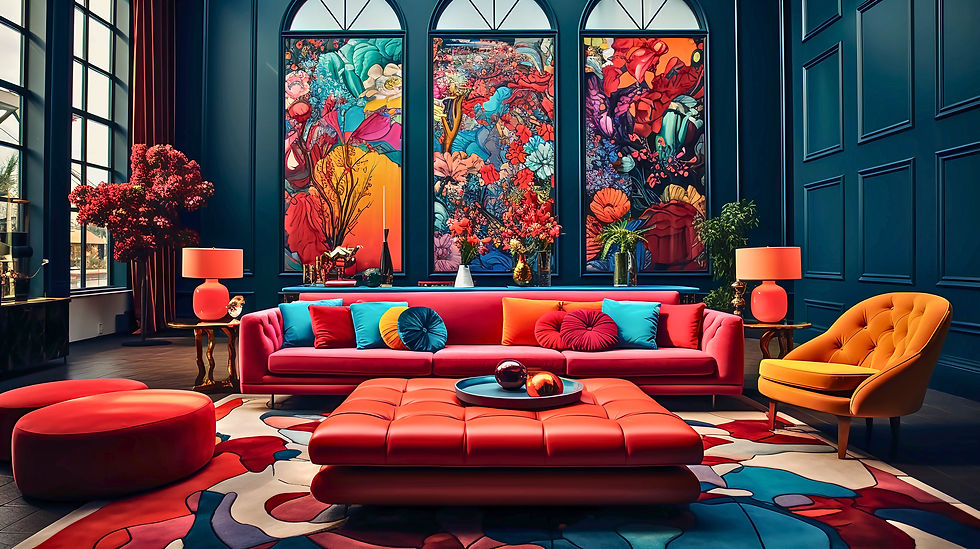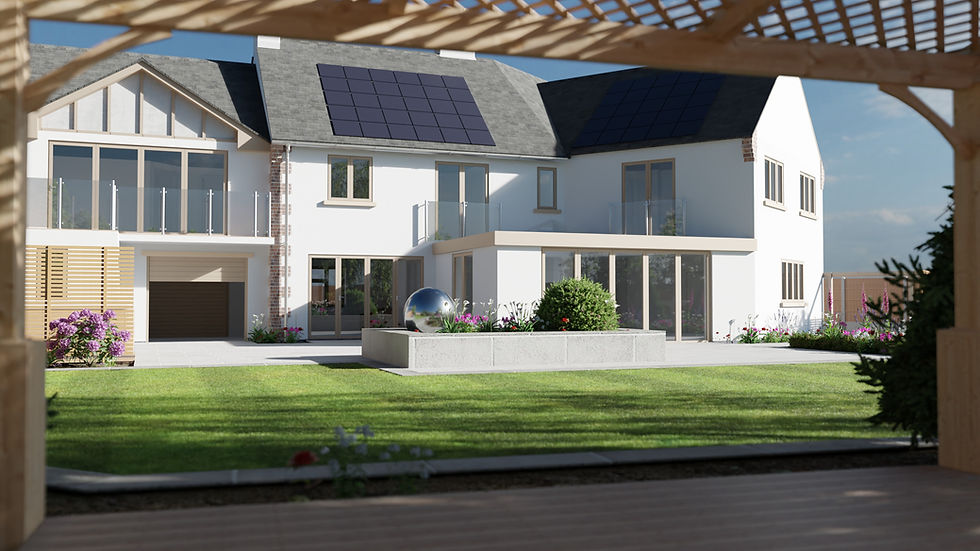Mastering interior design: 8 principles for a harmonious home
- Jason Rhodes
- Jul 27, 2023
- 2 min read
Updated: Nov 23, 2023

Interior design is more than just arranging furniture and selecting colour palettes; it's about creating a harmonious an d functional living space that reflects your personality and meets your needs. Whether you're starting from scratch or giving your home a makeover, understanding key design principles is crucial.
Here are eight principles to guide you towards achieving a well-designed and aesthetically pleasing interior.
Balance
Balance is the foundation of a well-designed space. Achieving balance involves distributing visual weight evenly throughout a room. There are two types of balance: symmetrical and asymmetrical. Symmetrical balance is achieved by mirroring elements on either side of a central point, while asymmetrical balance is more relaxed and involves balancing dissimilar objects.

Unity and variety
Create a cohesive look by establishing unity through colour, style, or theme. However, too much uniformity can be monotonous. Introduce variety by incorporating different textures, patterns, or shapes to add interest and prevent the space from feeling monolithic.
Rhythm
Just like in music, rhythm in design creates a sense of movement and flow. Repetition of colours, patterns, or shapes establishes rhythm, guiding the eye smoothly around the room. This principle creates visual interest and cohesion in your interior.

Scale and proportion
Scale and proportion are crucial for a well-balanced space. Oversized furniture in a small room can make it feel cramped, while small pieces in a large room may get lost. Ensure that the size of elements relates harmoniously to the space they occupy, creating a visually appealing composition.
Emphasis
Emphasis, or focal points, draw attention to a particular area or element in a room. Whether it's a bold accent wall, a stunning piece of furniture, or an eye-catching piece of art, emphasis adds interest and creates a visual hierarchy within the space.

Contrast
Contrast adds drama and excitement to a room. Play with contrasting elements such as light and dark, smooth, and textured, or old and new to create visual interest. A well-executed use of contrast can elevate the overall aesthetic of your interior design.
Harmony
Harmony is the seamless integration of all design elements to create a pleasing and unified whole. While variety adds interest, harmony ensures that all the elements work together cohesively. Consistent colour palettes, complementary styles, and thoughtful arrangement contribute to a harmonious interior.

Functionality
No matter how aesthetically pleasing a space is, it must also serve its purpose. Consider the practical aspects of the design, ensuring that the layout and furnishings meet your lifestyle needs. Strike a balance between form and function for a truly well-designed interior.
Conclusion
Mastering the art of interior design involves understanding and implementing these fundamental principles. Whether you're a novice decorator or a seasoned designer, incorporating balance, unity, rhythm, scale, emphasis, contrast, harmony, and functionality will guide you towards creating a space that not only looks beautiful but also feels welcoming and suits your lifestyle. Remember, a well-designed interior is not just visually appealing; it's a reflection of your personality and a space where you can truly feel at home.
If you want to discuss how we can craft your interior design to give you the lifestyle you want, let's talk. Get in touch today.



